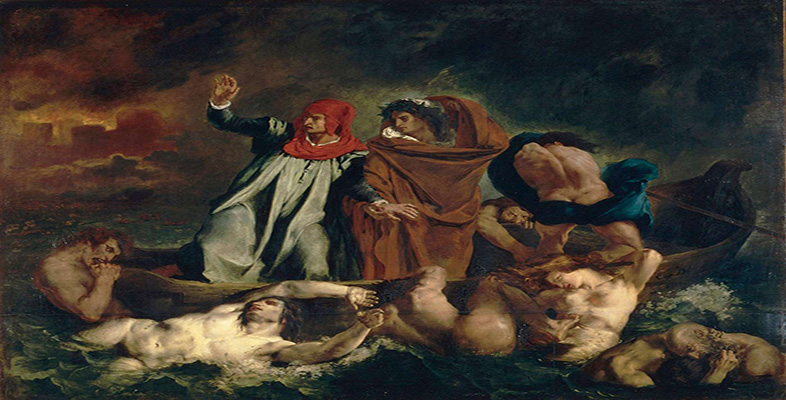2.11 Birth of the ‘Romantic’
The ‘ardent and animated’ aspects of Delacroix’s work made commentators describe his large canvases of the 1820s as ‘Romantic’. By the end of the decade, he was regarded by many younger artists as the leader of a new, modern school of painting that in a spirit of revolutionary fervour had thrown off the shackles of a worn-out classicism. And yet, when a stranger who had seen Sardanapalusreferred to Delacroix as the ‘Victor Hugo of painting’, the artist responded, ‘You are mistaken, Sir, I am a pure classicist’ (quoted in Wilson-Smith, 1992, p.78). To put this in context: the 1827 Preface to Cromwell by the writer and critic Victor Hugo, an acknowledged leader of the Romantics, is a manifesto accompanying a drama he had written. It is a call to arms to fellow Romantics to cast aside the old ways and embrace a Romantic credo. The main thrust of the Preface is blatantly anti-classical: Hugo demands that writers should no longer work under the tyranny of classical rules or genres. Arguing that there must be a new spirit of liberty in art, he declares, ‘There are no rules; there are no models! Or rather there are no rules except the general rules of nature’ (Hugo, 1949, p.41). While he acknowledges that writers must proceed in a way compatible with their chosen subject, Hugo also denounces the servile imitation of any source. Delacroix was determined, in spite of all the criticism, to hold on to a good opinion of his controversial painting, but resented the suggested identification with this cutting-edge coterie. In the following section we’ll look at some of the reasons behind this crisis of artistic identity. In the meantime, the main point to take away from this section is that Delacroix’s painting of Sardanapalus was felt to be too extreme in its departure from the compositional and colour effects of neoclassical art.
